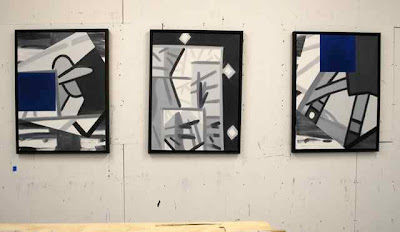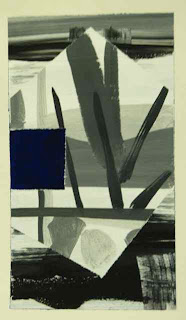
Artist Statement
As I sat down to write, the phrase "I am the man, I was there, I suffered." came to mind. That man seemed to be Achilles, Odysseus, maybe Aeneas, or Christ. These figures mirror feelings it seems we harbor in our lives. The words above were written by Walt Whitman. I have also been fascinated by Wallace Steven's critical description of the Hero as in his poem, "How does one stand To behold the sublime, To confront the mockers, The mickey mockers..." These thoughts contain pathos, they have created our literature, they create the hero that creates our selves.
I went to Italy to see the Frescos of the early Renaissance in 1972 when an art student at the School of Visual Arts in NYC. I came back naively thinking that I wanted to do just that, make the National Epic. I loved the flat, hard, modern surface of Piero della Francesca, Giotto and Mantegna. The figure and the narrative, had been out of fashion in art for some time. I soon understood the reasons and felt similar. It stayed in the back of my mind.


I went back to the landscape for itself. It was not long before I realized that any particular thing focused upon became a kind of figure or idea of that landscape space. This seemed an image of what a thought was in the mind. The grasping of the idea seemed a going back into the reeds to retrieve the figure. I put this forth as a metaphor for the idea as well as for painting itself. I equated the making of a figure with this idea and in my paintings put a line around the figure to formally distinguish it from the deeper space as it achieved the surface. The fitting together of this content or idea along with it's form or figure became the predominate idea my work.
At first I worked in a more abstract manner, using the forms of abstract expressionism. It was apparent to me how figurative these abstract forms were and I had no problem restoring the contents I felt necessary for art to continue. Later my juxtaposition of differing painting styles side by side, of figure and abstraction coinciding, made the puzzle of images and thoughts I was pursuing. I saw a moment's truth evolving into continually changing feelings or beliefs. I began to see a revolving reality cycling from one ending becoming new beginnings.


In the last series of paintings I completed, Paumanok Reeds, I retain a feeling for the particular place. It is the poetic bay beach of Long Island. Paumanok, is the Indian name Whitman used meaning "fish shaped island." The reeds are the thing which stands out as I paint there each year. The reeds contain crickets that sing in a way lending a mystery to the place which as I would paint pointed to the greater mix of reality itself. In the last juxtaposition of paintings the figure seemed to peer into these reeds, into that mystery they share with the stars, with reality itself. In the fragmented works he seems to now fall into that difficulty or impossibility of understanding.
I realized this idea long ago, in the painting of a landscape out of doors. This activity led me to see how everything really is, constantly changing . The wind, the sun and season. The clouds, leaves, waves, passing became a symbol and image of this reality to me.

These ideas extend from the figural content of the Hero to the form of the more abstract Stations. I thought of Christ's fall and getting back up; 1, 2, 3, times, part of this revolving reality. The thoughts, moments, segments of a life measured, the marking, making a description a formal representation of this passion.











































